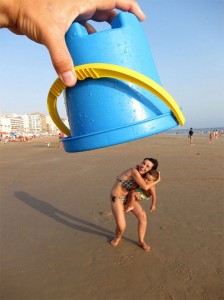We talk a great deal about students. We create charts on their performance, discuss trends in their achievement, differentiate their instruction, but when do we listen to what they have to say? Let’s be honest, we as educators get mad when “no one listens to us” and the politicians, administrators or even Boards of Education make decisions. Are we doing the same thing to students?
I recently read a great blog post that could assist teachers with listening to student voices. The post Share This With All the Schools, Please discusses a parent/teacher conference session that ended up revealing something interesting about the importance of listening to children. In the post, the author talks with a teacher about how to help her son (and herself too) with math. After the lesson, she asks the teacher about students and trust. The teacher goes on to tell her about something she does every week.
Every Friday afternoon Chase’s teacher asks her students to take out a piece of paper and write down the names of four children with whom they’d like to sit the following week. The children know that these requests may or may not be honored. She also asks the students to nominate one student whom they believe has been an exceptional classroom citizen that week. All ballots are privately submitted to her.
And every single Friday afternoon, after the students go home, Chase’s teacher takes out those slips of paper, places them in front of her and studies them. She looks for patterns.
Who is not getting requested by anyone else?
Who doesn’t even know who to request?
Who never gets noticed enough to be nominated?
Who had a million friends last week and none this week?
You see, Chase’s teacher is not looking for a new seating chart or “exceptional citizens.” Chase’s teacher is looking for lonely children. She’s looking for children who are struggling to connect with other children. She’s identifying the little ones who are falling through the cracks of the class’s social life. She is discovering whose gifts are going unnoticed by their peers. And she’s pinning down- right away- who’s being bullied and who is doing the bullying.
– See more at: http://momastery.com/blog/2014/01/30/share-schools/#sthash.vodhiLz7.dpuf
According to the teacher, she has done this activity ever Friday since Columbine as a way to determine who in her class is isolated, alone, or just being overlooked.
Who is listening to your students’ voices?








